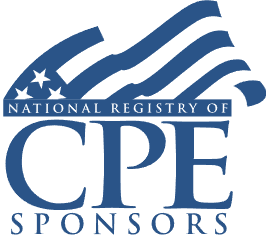Navigating Impact of New York Corporate Tax Overhaul: New Apportionment and Reporting Rules
Mastering Unitary Reporting, Market-Based Sourcing, and Changes to NY State Treatment of Nonresident S Corp Shareholders

Course Details
- smart_display Format
On-Demand
- signal_cellular_alt Difficulty Level
Intermediate
- work Practice Area
Corporate Tax
- event Date
Thursday, February 9, 2017
- schedule Time
1:00 PM E.T.
- timer Program Length
110 minutes
-
BARBRI is a NASBA CPE sponsor and this 110-minute webinar is accredited for 2.0 CPE credits.
-
Live Online
On Demand
This course will provide corporate tax advisers with a thorough and practical guide to the latest developments in New York State’s multi-year tax reform initiative. The panel will discuss the broader framework of New York’s corporate tax reform changes and will address the provisions scheduled to go into effect with the 2016-2017 Budget Act. The event will outline various elections effective for 2017, detail changes to balance sheet reporting, review treatment of nonresident S corporations conducting business in New York State, and point out filing deadline changes.
Description
In recent years, New York enacted and implemented a major corporate tax reform bill. The bill represented a significant overhaul of the rules for taxing the income of C corporations and may have implications for sourcing income to New York by nonresident shareholders of S corporations. The reform went into effect for 2015 and has a multi-year implementation period. Corporations doing business in the state of New York need to understand the changes under the corporate tax overhaul.
The key features of the broad-based changes to New York’s corporate tax structure are: adoption of economic nexus jurisdictional rules activated if a corporation has receipts of $1 million or more in a tax year from New York activities; substitution of a unitary combined reporting regime for the existing combined reporting rules; and expansion of the single receipts factor apportionment formula generally based on market-based sourcing to all receipts, particularly receipts from services and intangibles.
New York City’s corporate tax provisions were also recently changed, but there remains some significant areas of misalignment between the State and City rules. Unless and until there is conformity, differences between state and city tax treatment will create a filing and administrative burden for businesses that must compute their overall state and city liability under these two different tax regimes.
Listen as the panel provides a practical guide to the latest developments in New York State’s ongoing corporate tax reform initiative, discussing changes upcoming in 2017, and offering useful tools for navigating apportionment and reporting requirements.
Outline
- Major 2014-2015 New York corporate income tax changes for out-of-state businesses
- Expansion of the single receipts factor apportionment formula
- Substitution of a unitary combined reporting regime for the existing combined reporting rules
- Adoption of economic nexus jurisdictional rules
- Repealing the bank franchise tax, bringing all corporations under the corporate franchise tax
- The 2015 legislation amendments: corporate franchise tax and other taxes
- Investment capital
- Investment income
- Qualified financial instrument
- Other changes
- Specific examples
Benefits
The panel will review these and other key issues:
- Assessing the Act’s impact on state income tax reporting procedures
- Evaluating the Act’s changes involving: economic nexus thresholds, market-based sourcing apportionment rules, corporate partner nexus reporting, and unitary combined reporting provisions
- Identifying and reconciling differences between state and city tax treatment in New York City and the state of New York
NASBA Details
Learning Objectives
After completing this course, you will be able to:
- Discern the Act’s impact on state income tax reporting procedures
- Ascertain the Act’s changes involving economic nexus thresholds
- Recognize market-based sourcing apportionment rules
- Determine corporate partner nexus reporting
- Identify unitary combined reporting provisions
- Field of Study: Taxes
- Level of Knowledge: Intermediate
- Advance Preparation: None
- Teaching Method: Seminar/Lecture
- Delivery Method: Group-Internet (via computer)
- Attendance Monitoring Method: Attendance is monitored electronically via a participant's PIN and through a series of attendance verification prompts displayed throughout the program
- Prerequisite: Three years+ business or public firm experience at mid-level within the organization, preparing complex state and multi-state income and sales tax forms and schedules; supervisory authority over other preparers/accountants. Knowledge and understanding of New York business tax reporting, single receipts factor apportionment, unitary combined reporting, and economic nexus jurisdiction; Familiarity with the New York corporate income tax changes for out-of-state business.

Strafford Publications, Inc. is registered with the National Association of State Boards of Accountancy (NASBA) as a sponsor of continuing professional education on the National Registry of CPE Sponsors. State boards of Accountancy have final authority on the acceptance of individual courses for CPE Credits. Complaints regarding registered sponsons may be submitted to NASBA through its website: www.nasbaregistry.org.
Unlimited access to premium CLE courses:
- Annual access
- Available live and on-demand
- Best for attorneys and legal professionals
Unlimited access to premium CPE courses.:
- Annual access
- Available live and on-demand
- Best for CPAs and tax professionals
Unlimited access to premium CLE, CPE, Professional Skills and Practice-Ready courses.:
- Annual access
- Available live and on-demand
- Best for legal, accounting, and tax professionals
Unlimited access to Professional Skills and Practice-Ready courses:
- Annual access
- Available on-demand
- Best for new attorneys
Related Courses

Construction Professional Services Agreements
Available On-Demand

Form 3115 Change in Accounting Method: Navigating the IRS Repair Regulations
Available On-Demand